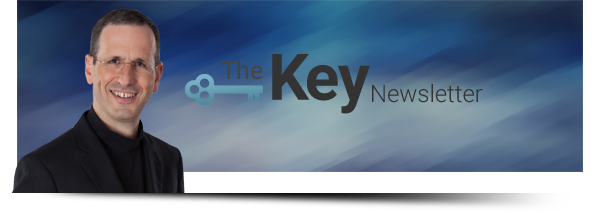Hi Leader,
In this key we show the impact on team success created when those who attend my strategy and innovation workshops come prepared to enter the learning zone. In fact, the first twenty minutes of our time together set the stage for the degree of success the team subsequently is able to achieve. Why is this true? The examples below illustrate the reasons why the way you choose to approach the learning zone sets the parameter for success.
The first 20 minutes: Succeed or Fail
In most of our strategy and innovation workshops with executive teams, I begin by asking participants to reflect and capture learning from recent successes and challenges. To facilitate the entry into the learning zone, I ask them to be forensic about their learning. By that I mean being specific, concrete, and penetratingly substantive.
There are a number of reasons why a high impact workshop must begin by having attendees consciously enter and embrace the learning zone. First, unlocking participants' learning triggers a huge growth potential.
Second, the breakthrough we are working to create requires the executives to raise the authenticity bar by engaging at a high level of intensity.
Third, quickly evolving and transforming ourselves requires us to generate the learning that is possible only by unleashing the brain chemistry of authentic learning.
Innovation velocity enable us to differentiate our solutions in the market. As a result, we get where we are going faster, more effectively, and in better shape than we would have otherwise.
Let's start with an example of a statement that is common among people who have not entered the learning zone: "Things are tough; we have a lot of challenges." This mindset clearly does not trigger the brain's creativity or the discovery that facilitates engagement. Unless executives turn that perspective around immediately, they will miss the growth opportunity that's possible in their first twenty minutes with me.
Why doesn't the above statement qualify as learning? First, saying "Things are tough" adds no new information about the situation. Second, do you really believe that your corporate career and challenges truly rise to the level of tough? Before you answer, try this reality check: take a look at the news. There are some really tough stories in the headlines this week. Do you still feel that your career challenges are tough?
The third, and most important reason why saying "Things are tough" doesn't qualify as learning, is this: instead of lamenting your situation, consider the reality that if everything went smoothly by itself, you would have no opportunity for growth and a diminished or no role in your organization. The reason you have a job is that there are problems to be solved and clients and stakeholders who require your help. As an executive, you are paid to solve complex problems. So if you feel that things are tough at work, say "Thank you" and embrace the opportunities that complex challenges offer.
Now let's turn to an example of what does qualify as learning, and how you can succeed in the first twenty minutes of my workshop. Here is what one executive said during a recent strategy event: "I've realized that I resisted the changes in our organization because I was afraid to lose the sense of autonomy and control I enjoyed, and because I was worried that I was not going to be able to replicate my recent success in this new situation. Instead, I found that the organizational changes pushed me into a whole new learning curve that totally energized and invigorated me and my team. My most important insight is that the fastest growth occurs when I embrace what I fear and resist the most."
With that statement, this executive got everyone's attention. It was raw, real and authentic, and it embodied the learning we all need.
Here is another example of failing to enter the learning zone during the first twenty minutes by throwing out a thought or belief that doesn't qualify as true learning: "We have a problem with collaboration. We need to collaborate more."
Really? Why do you need to collaborate more?
My experience with executive teams has taught me that the collaboration conversation can serve as a great camouflage for the true issue that people don't want to recognize and refuse to discuss. Collaboration becomes a crutch they can hide behind easily.
Let's look at a second example of meaningful learning that enables you to succeed in the first twenty minutes of your high impact workshop with me. An executive shared this insight during a recent workshop: "By asking team members to articulate clearly what they need in order to succeed, and by following their answers with the second and third, and at times even the fifth "why," we are able to build a deep understanding of the relevant issues. Such profound awareness enables us to significantly accelerate our alignment and to improve the quality of our interactions by converting issues into clear proposals and solutions. My learning is that this process requires discipline, and the readiness to engage at high levels of intensity. We further accelerate this conversation by asking people to formulate clear, concrete requests and proposals."
This executive's insight stopped us in our tracks. He got our attention by pointing to the prevalent blind spot: too often collaboration is a peripheral and/or displaced issue that camouflages the real need and masquerades as the issue at hand. Instead, the executive proposed that organizational and team effectiveness require us to make investments in each other. We build more robust and resilient teams that perform at a much higher level by inquiring deeply and by going out of our way to find out how we can help people on our team succeed.
Now it's your turn. Turn the key. What is your learning? What would you share in the first twenty minutes of our high-impact workshop if it were held today? How will that insight propel you and your team forward?
© Aviv Shahar

